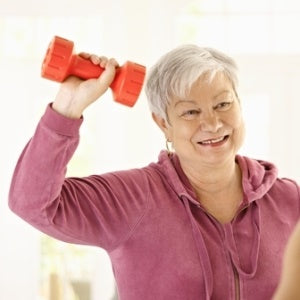Physical coordination can deteriorate with aging due to a variety of variables including decreased muscle strength, slower reflexes, and changes in eyesight or balance. These alterations can have an influence on everyday actions such as walking, clothing, and even reaching for an item on a shelf. Improving coordination in older persons is critical not only for retaining independence, but also for lowering the risk of falls and associated injuries.
Why Does Coordination Decline with Age?
Coordination is the body's ability to move smoothly and accurately. It combines muscle control, balance, cognitive function, and sensory perception. As humans age, various changes occur that may influence these systems:
- Decreased muscle mass and strength (sarcopenia)
- Slower reaction times
- Joint stiffness and arthritis
- Vision or hearing impairment
- Neurological changes that impact motor control
- Sedentary lifestyle leading to muscle atrophy and poor balance
These changes are common, but they are not inevitable. With regular effort, older adults can maintain or even improve their coordination using targeted tactics.
Benefits of Better Coordination in Older Adults
Improving coordination not only helps with movement, but it also improves overall quality of life. Some important advantages include:
- Reduced risk of falls and injuries
- Greater independence in daily activities
- Improved confidence and emotional well-being
- Better posture and body mechanics
- Increased participation in social and physical activities
Lifestyle Changes that Promote Coordination
In addition to exercise, daily habits can considerably improve coordination.
1. Stay physically active.
Consistent movement throughout the day promotes muscle strength and joint function. Encourage walking, gardening, mild housework, or any other activity that keeps the body active.
2. Wear supportive footwear.
Shoes with adequate arch support, non-slip soles, and a snug fit will promote balance and prevent slippage.
3. Create a safe environment.
De-cluttering, reducing trip hazards, and installing handrails can improve mobility and lessen fear of falling. A steady environment promotes natural and coordinated movement.
4. Stay hydrated and eat well.
Nutrition influences muscle performance and energy levels. Proper hydration promotes joint lubrication and cognitive function.
Key nutrients are:
Protein for muscle upkeep.
Vitamin D and calcium promote bone health.
Omega-3 fatty acids promote brain and joint health.
5. Schedule regular vision and hearing checks.
Coordination is primarily reliant on sensory input. Poor eyesight or hearing might cause delayed reactions or errors. Regular exams help keep glasses or hearing aids up to date.
6. Practice good posture.
Slouching or bad posture can impair balance and body alignment. Strengthening the core and practicing good posture will help you gain more control over your body.
Tools & Aids to Promote Coordination
Some devices can increase stability or make coordination exercises safer and more effective.
- Use resistance bands for strength training.
- Balance boards or cushions for core exercises.
- Grip-enhancing gloves to improve hand control.
- Canes or walkers with ergonomic handles serve as mobility aids.
It's critical to select the appropriate tool based on the individual's skill and comfort level. A physical or occupational therapist can assist with selection.
Encouragement and Motivation
The most difficult difficulty is not always physical; it can also be mental. Coordination challenges can be discouraging for older persons, especially after a fall or injury. Offering encouragement, appreciating little accomplishments, and making activities fun are all important for retaining motivation.
Suggestions:
Involve a partner or caretaker for social connections.
Play music during fitness sessions.
Set small, manageable goals every week.
Track your progress with a simple journal or calendar.



